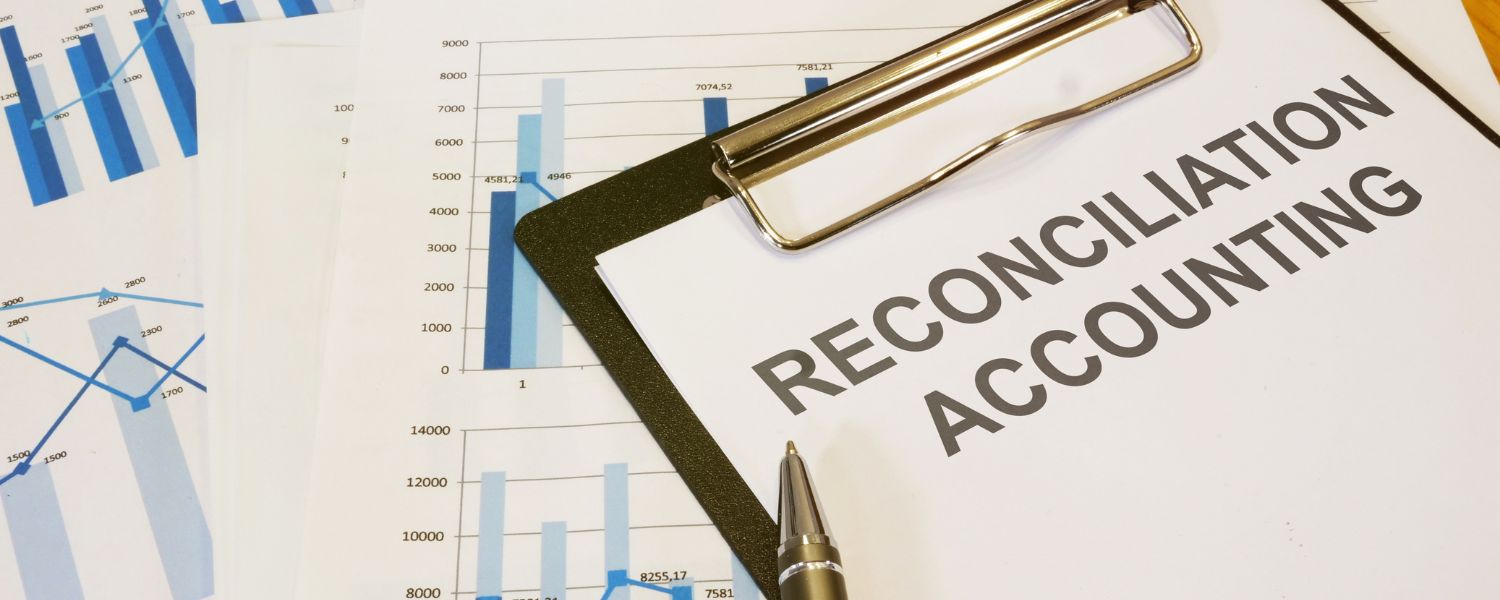
Account reconciliation is crucial for maintaining the integrity of business financial records. The process of account reconciliation involves verifying transactions, balances, and other financial data across different accounts, such as bank statements, general ledger entries, and invoices. The reconciliation process aims to identify discrepancies, errors, or fraud and reconcile them to ensure accurate financial reporting.
1. Types of accounting reconciliation
There are various types of reconciliation in accounting, each serving a specific purpose:
Bank reconciliation: Compares bank statements with a company's internal records to ensure that recorded transactions match transactions processed by the bank.
Inter-company reconciliation: Aligns financial transactions between different entities or departments within the same organization to eliminate discrepancies and ensure accurate consolidation.
Balance sheet reconciliation: Compares account balances on the balance sheet with supporting documentation to verify accuracy and completeness.
Transaction matching reconciliation: Matches individual transactions between different accounts or systems to identify discrepancies and ensure consistency in financial reporting.
Each type of reconciliation plays a vital role in maintaining financial integrity and supporting informed decision-making within organizations.
2. Why accounting reconciliation matters for businesses
Accounting reconciliation is instrumental in detecting errors, fraud, and discrepancies in financial records. By reconciling accounts regularly with the best SaaS billing software, businesses can identify and rectify issues promptly, maintain compliance with regulatory standards, and make informed financial decisions. Moreover, accurate and timely reconciliation using the best SaaS billing software enhances stakeholder trust, strengthens internal controls, and facilitates strategic planning and forecasting.
3. Accounting reconciliation best practices
Implementing best practices in accounting reconciliation is essential for optimizing efficiency and accuracy. Some key practices include:
Establishing clear reconciliation procedures and documentation standards.
Leveraging automation tools to streamline reconciliation processes and minimize manual errors.
Conducting regular reconciliations to detect discrepancies promptly and mitigate risks.
Segregating duties and fostering collaboration between finance and operational teams to enhance accountability and transparency.
Performing periodic reviews and audits to ensure compliance with regulatory requirements and internal policies.
By adhering to these best practices, businesses can strengthen financial controls, enhance operational efficiency, and mitigate risks associated with inaccurate financial reporting.
4. Accounting reconciliation with Stripe
Leading payment processing platforms, such as Stripe and PayPal, offer robust tools for account reconciliation. Integrating such payment processing platforms with accounting software enables businesses to streamline reconciliation, automate data synchronization, and gain real-time insights into financial transactions. With features such as automated transaction matching, bank statement imports, and customizable reconciliation rules, platforms like Stripe, leveraging Stripe code, simplify the reconciliation process and enable businesses to reconcile transactions accurately and efficiently.
5. Why Do You Need to Reconcile Accounts?
Reconciling accounts ensures accuracy and completeness of financial records, enhances transparency, facilitates fraud detection, and supports decision-making processes. It serves as a foundational aspect of financial management and control within organizations. By reconciling accounts regularly, businesses can identify discrepancies, errors, or unauthorized transactions, ensuring the integrity and reliability of financial information.
6. Reconcile to Account Activity
Reconciling to account activity involves comparing transactional data with corresponding account balances to identify discrepancies or errors. This approach helps businesses maintain accurate financial records and detect anomalies promptly. By reconciling account activity regularly, businesses can ensure the accuracy of financial reporting, identify discrepancies or errors early, and take appropriate corrective actions to mitigate risks and maintain financial integrity.
7. Mastering Reconciliation
Mastering reconciliation requires diligence, attention to detail, and adherence to standardized processes. By implementing efficient reconciliation workflows and leveraging technology solutions, businesses can optimize resource utilization and minimize operational risks. Some key strategies for mastering reconciliation include:
Standardizing reconciliation procedures and documentation templates.
Leveraging automation tools to streamline reconciliation processes and minimize manual errors.
Conducting regular training and education sessions to enhance staff competency in reconciliation practices.
Establishing clear roles and responsibilities for reconciliation tasks and fostering collaboration between finance and operational teams.
Implementing robust controls and review mechanisms to ensure the accuracy and integrity of reconciliation outcomes.
By mastering reconciliation, businesses can enhance financial transparency, strengthen internal controls, and optimize operational efficiency, enabling them to make informed decisions and drive sustainable growth.
8. When should reconciliation happen?
Reconciliation should typically occur on a regular basis, such as monthly, quarterly, or annually, depending on the volume and complexity of financial transactions. Timely reconciliation ensures data accuracy and facilitates timely decision-making. Businesses should establish a consistent reconciliation schedule and adhere to it to ensure the integrity and reliability of financial information. By reconciling accounts promptly, businesses can identify discrepancies early, take corrective actions, and maintain financial integrity and compliance with regulatory requirements.
9. Account reconciliation methods
Common methods of account reconciliation include manual reconciliation, automated reconciliation, and hybrid approaches combining manual review with automation tools. Businesses can choose the most suitable method based on their operational requirements and resource availability. While manual reconciliation offers flexibility and control, it is time-consuming and prone to errors. Automated reconciliation, on the other hand, leverages technology solutions to streamline the reconciliation process, reduce manual effort, and enhance accuracy. Hybrid approaches combine the benefits of manual review with automation tools to optimize efficiency and accuracy. By selecting the appropriate reconciliation method, businesses can streamline their reconciliation processes, minimize errors, and improve operational efficiency.
10. Reconciling to External Documentation
Reconciling to external documentation involves comparing financial records with supporting documents, such as bank statements, invoices, and purchase orders. This verification process helps validate transactional accuracy and ensures compliance with regulatory standards. By reconciling to external documentation, businesses can verify the authenticity of financial transactions, detect discrepancies or errors, and maintain accurate financial records. This approach also facilitates audit trails and supports regulatory compliance, enhancing stakeholder trust and confidence in financial reporting.
11. The mechanics of account reconciliation
The mechanics of account reconciliation entail matching transactional data, identifying discrepancies, investigating root causes of discrepancies, and reconciling differences through adjustments or corrections. This systematic approach ensures the integrity of financial information and facilitates financial reporting. The reconciliation process typically involves the following steps:
Gathering relevant financial data and supporting documentation.
Comparing transactional records with corresponding account balances.
Identifying discrepancies or errors and investigating their root causes.
Reconciling differences through adjustments, corrections, or additional documentation.
Documenting reconciliation outcomes and maintaining audit trails for future reference.
By following standardized procedures and leveraging technology solutions, businesses can streamline the reconciliation process, enhance accuracy, and maintain financial integrity.
12. Why should You go for Accounts Reconciliation?
Accounts reconciliation is essential for maintaining financial integrity, fostering transparency, complying with regulatory requirements, and optimizing operational efficiency. Businesses that prioritize reconciliation are better equipped to mitigate risks, detect fraud, and make informed decisions. By reconciling accounts regularly, businesses can ensure the accuracy and completeness of financial records, identify discrepancies or errors early, and take appropriate corrective actions to maintain financial integrity and compliance. Additionally, reconciliation provides valuable insights into financial performance, enabling businesses to identify trends, opportunities, and risks, and make informed decisions to drive sustainable growth.
13. How Does Reconciliation in Accounting Work?
Reconciliation in accounting involves comparing financial data from different sources, identifying discrepancies, reconciling variances, and documenting reconciliation outcomes. By following standardized procedures and leveraging technology solutions, businesses can streamline the reconciliation process and enhance financial control. The reconciliation process typically involves the following steps:
Gathering financial data from different sources, such as bank statements, general ledger entries, and invoices.
Comparing transactional records with corresponding account balances to identify discrepancies or errors.
Investigating the root causes of discrepancies and reconciling differences through adjustments, corrections, or additional documentation.
Documenting reconciliation outcomes and maintaining audit trails for future reference.
Reviewing reconciliation results and addressing any outstanding issues or discrepancies.
By implementing efficient reconciliation workflows and leveraging technology solutions, businesses can optimize resource utilization, minimize operational risks, and enhance financial transparency and control.
Conclusion
Effective account reconciliation is indispensable for businesses seeking to maintain financial accuracy, compliance, and operational efficiency. By implementing best practices, leveraging technology solutions, and fostering a culture of accountability, organizations can streamline the reconciliation process and unlock strategic insights for sustainable growth. With the right approach, businesses can enhance financial transparency, strengthen internal controls, and make informed decisions to drive long-term success.
About Us
Billsby is a sector-leading subscription billing software engine, helping businesses manage the issuing of invoices and the collection of recurring payments, whilst providing award-winning customer service support. Integrated with all of the major accounts software packages, Billsby understands the importance of Accounts Reconciliation to businesses. Ranked by G2 as the Number 1 subscription billing platform, Billsby streamlines billing operations, offers flexible subscription management Service, integrates with various systems, and provides real-time analytics, enhancing efficiency and scalability. Billsby provides the simplest and easiest solution for businesses choosing to adopt a subscription billing model, helping them to maximize their subscription revenue potential. For more in-depth guidance and bespoke solutions, visit www.billsby.com today.













